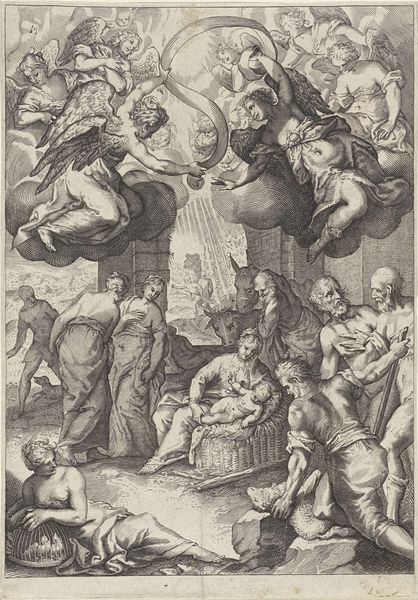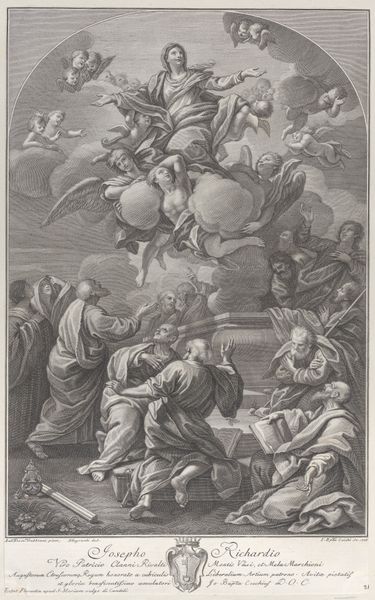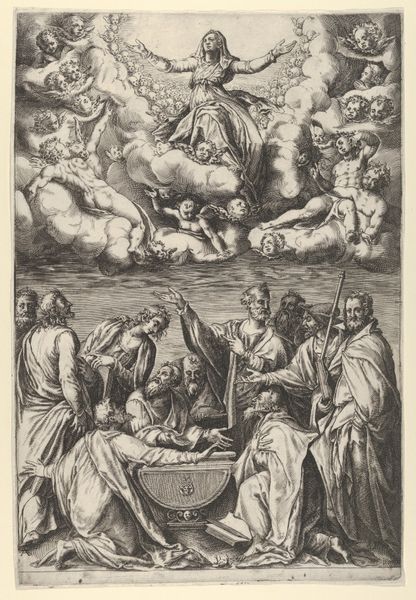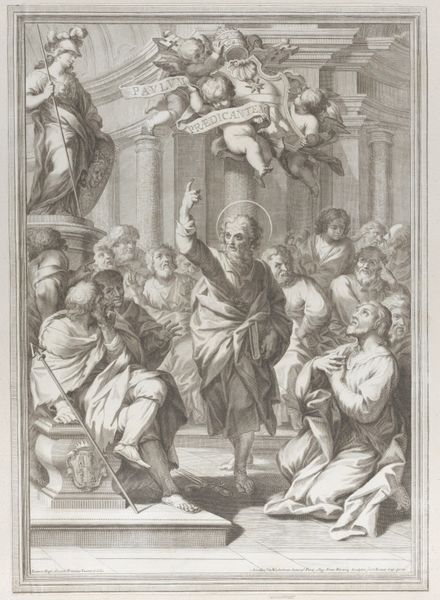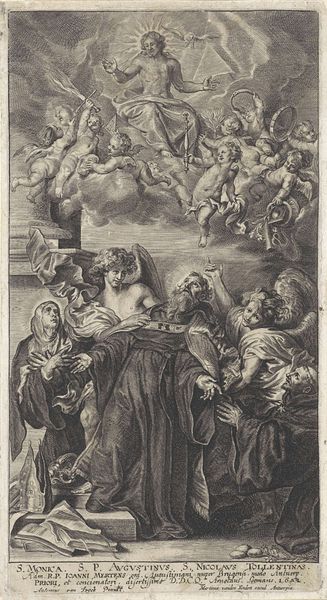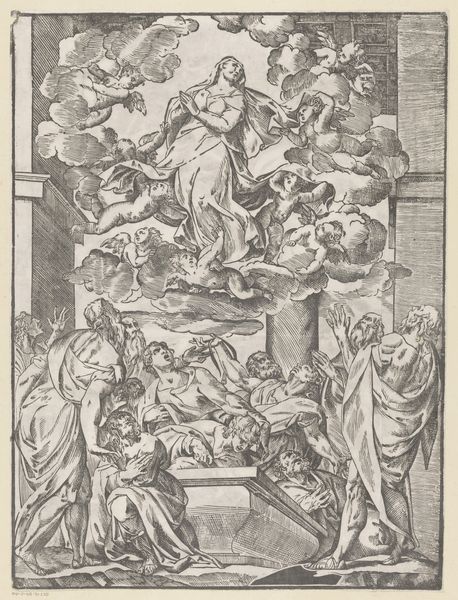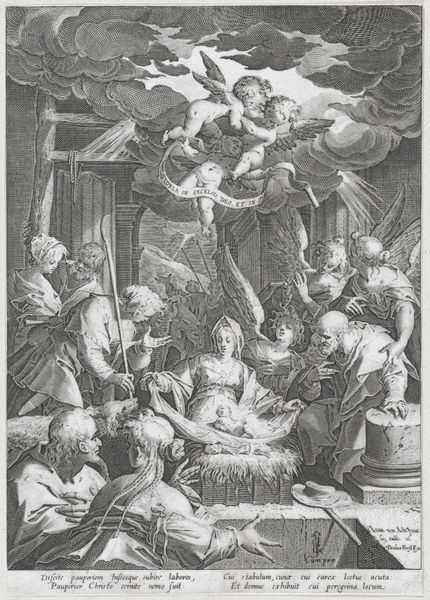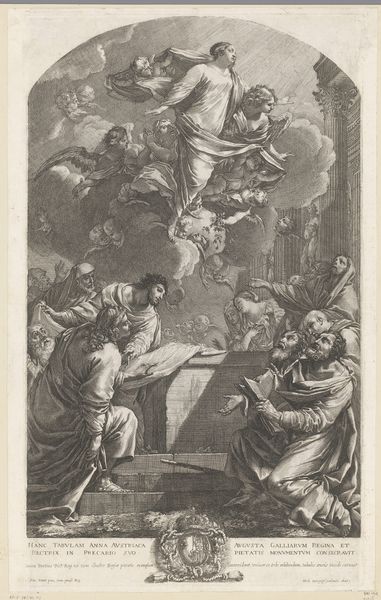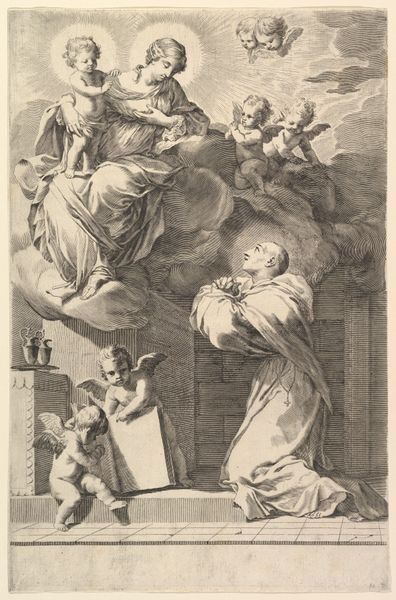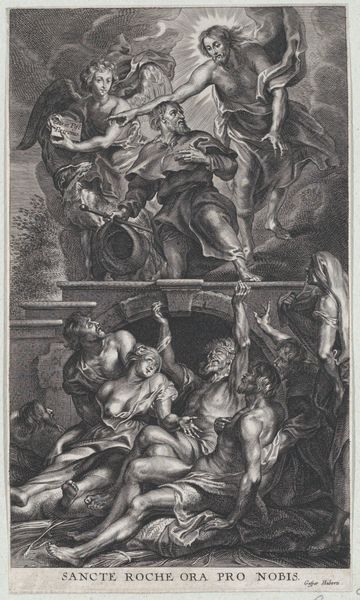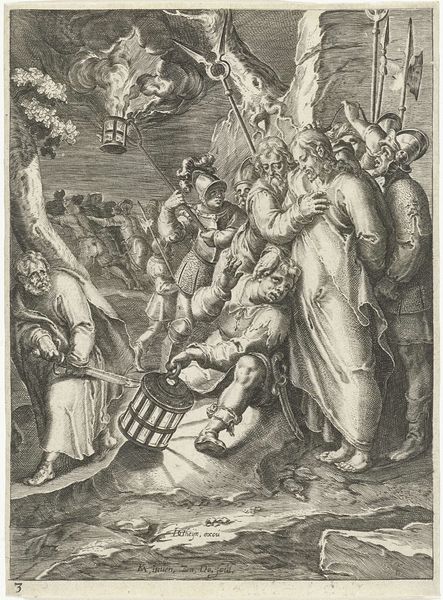
print, engraving
#
narrative-art
#
baroque
# print
#
figuration
#
history-painting
#
engraving
Dimensions: 315 mm (height) x 210 mm (width) (bladmaal)
Curator: I’m immediately struck by the tiered composition and dense orchestration of figures, a hallmark of the period. Editor: Indeed. The work we're observing, "Hyrdernes tilbedelse," or "The Adoration of the Shepherds," an engraving crafted in 1601 by Lucas Kilian, presents a characteristically Baroque approach. There's a theatrical energy, don’t you think? Curator: Yes, Baroque extravagance is in full effect. The layers operate on multiple levels—earthly and celestial. Note how Kilian organizes the composition, with a clear division between the angelic hosts above and the grounded shepherds below. This layered effect contributes to a sense of grandeur and spectacle. Editor: The symbolism feels just as deliberately layered. The angels unfurling a scroll proclaiming "Gloria in altissimis Deo," while the shepherds gaze upon the newborn Christ, both participate in an affirmation of divine promise fulfilled. There's something so culturally ingrained and profoundly evocative in these images; it's like peering into centuries of collective faith. Curator: I agree, but let’s not forget the artistic labor behind it. See the cross-hatching and stippling techniques, which create tonal variations in this monochromatic engraving. It really heightens the sense of depth and volume despite the obvious flatness of the medium. Consider, too, how Kilian's command over line defines the characters and their expressions. Editor: Absolutely, and the expressions he captures, that awestruck wonder. I read that some art historians interpret the semi-nude figures at the lower right corner, for instance, as symbolizing humanity freed from the shackles of the old covenant by the birth of Christ. Whether or not you ascribe to that specific interpretation, the weight of symbolism within this print cannot be overstated. Curator: Well put. Thinking structurally, the figures at the bottom, their earthly vulnerability—a deliberate counterpoint to the celestial fanfare above—it certainly balances out the overall schema. The material contrast—one ephemeral and ethereal, the other weighty and anchored—completes the narrative through aesthetic balance. Editor: Exactly. To think this image was once a means of conveying potent religious narratives—and sparking faith… And now it's being picked apart for structure and iconography. Curator: Ultimately, it stands as a document of enduring cultural memory as rendered through a uniquely attuned artistic vision. Editor: An artistic vision that we can perhaps appreciate a little bit more now.
Comments
No comments
Be the first to comment and join the conversation on the ultimate creative platform.
